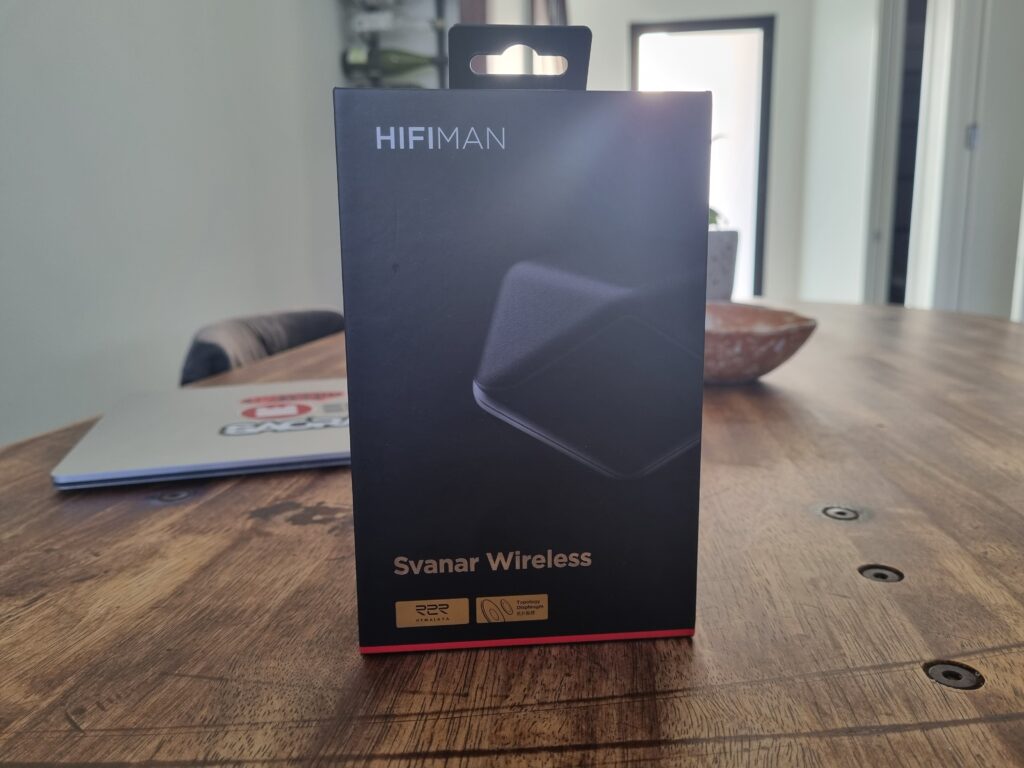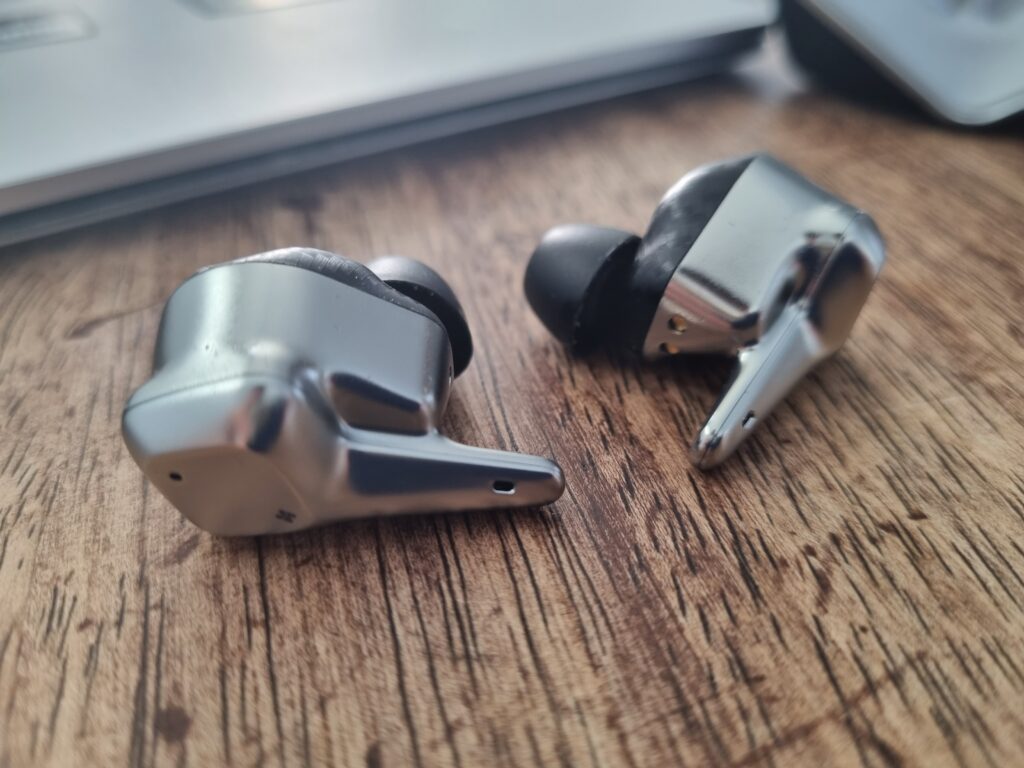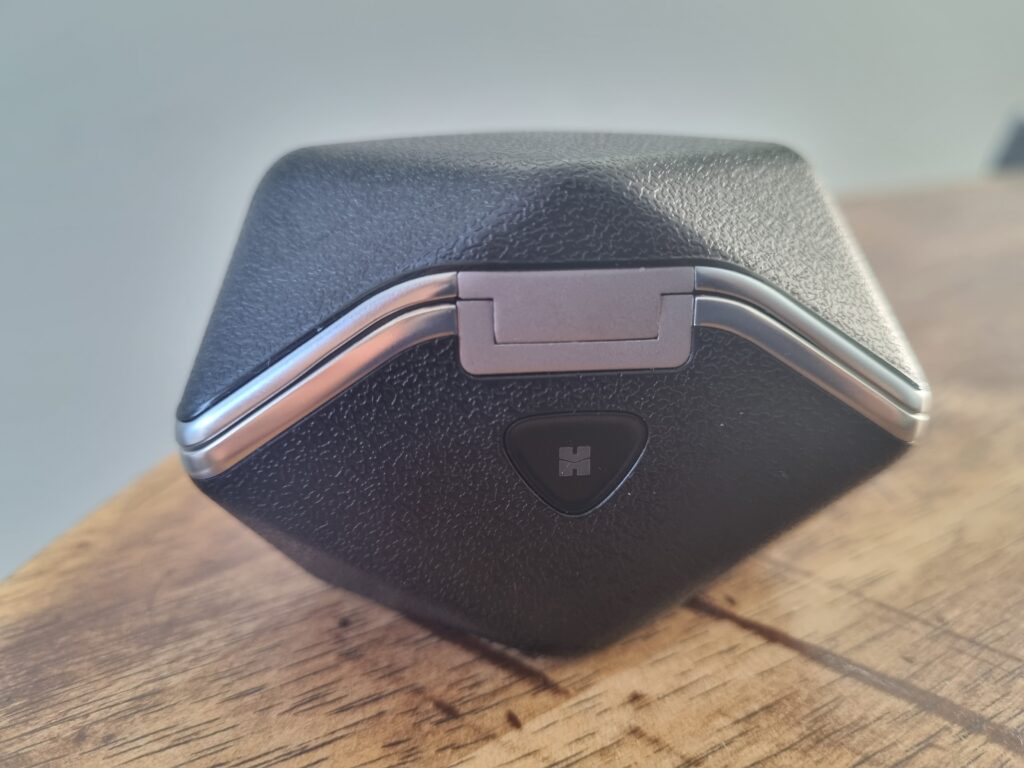Disclaimer: I formally thank Elaine from Hifiman for graciously providing the Headphone List with Svanar Wireless in exchange for an honest review.
Pros:
- Revolutionary R2R “Himalaya” Ladder-DAC technology pushes audio quality to the limit via “Hi-fidelity mode”.
- Excellent X-axis staging with impressive depth-of-field and separation compared to its TWS rivals
- Brutalist/Angular design matches the price point appropriately.
- Luscious and enveloping midrange performance with class-leading micro-detail retrieval and timbre in the TWS space.
- Noteworthy ergonomics for a snug and comfortable fit.
- Polycarbonate outer shells and Carbon-fibre inner shells are feather-light.
- Sensors accurately detect when the earphones are taken outside of the ears, pausing any audio playback appropriately.
- Good battery life
Cons:
- “Ambient” mode fails to capture surrounding conversations.
- “ANC” mode doesn’t effectively block out extraneous noise from the surrounding environment
- The lower-mid-to-sub-bass floor lacks finesse, resulting in sub-bass bloom that masks subtler microdetails in the mid-to-upper-mid bands.
- They are charging and carrying cases awkwardly shaped for day-to-day usage.
Introduction
Hifiman is a familiar name that needs little introduction, for its reputation in the audiophile community far precedes it. “Planar magnetic” technology forms the nucleus of their extensive research and development, as reflected by the numerous headphone releases powered by the fruits of their technical know-how.
The springboard for this relatively young technology is the humble dynamic driver, a tried-and-tested architecture for producing a highly accurate and “warm” sound. Months ago, I reviewed Hifiman’s HE-R9, a full-sized circumaural headphone boasting their proprietary “topology diaphragm” dynamic drivers. What I heard was a technically-impressive headphone with an “organic flavour”.
The famous New York-based company didn’t become renowned because of its dynamic driver releases. The sudden proliferation of the “topology” diaphragm in their latest releases marks a significant deviation from their business-as-usual. But this can no longer be classified as an experiment.
Earlier this year, Hifiman took an ambitious leap of faith by launching their flagship in-ear-monitor (IEM), the Svanar. Powered by the same “topology diaphragm” engine, the Svanar was priced at an eye-watering USD 1999. A statement piece, Svanar’s lavish pricing is inaccessible to most audiophiles who aren’t willing to smash the two-kilo-buck ceiling.
Thankfully, Hifiman understands its target demographic. The Svanar’s “topology diaphragm” technology has trickled into a more wallet-friendly package, albeit in a new form: the Svanar Wireless (TWS). Killing two birds with one stone, Hifiman does one better by miniaturising their revolutionary “Himalayan” R2R DAC architecture into the Svanar Wireless. Two remarkable technologies for the price of $499.
A far cry from the Svanar’s original price tag, the Svanar Wireless has some lofty shoes to fill, given that it shares the same moniker with its wired sibling. Today, we examine Svanar Wireless based on its own merits. The Svanar Wireless can be purchased from the Hifiman Store.
Technology

There are a lot of good things to unpack with the Svanar Wireless. Firstly, Hifiman has successfully distilled its exclusive R2R ladder DAC architecture (known as their Himalaya module) into its diminutive proportions: a feature unheard of in the TWS market. Paired with an amplifier chipset promising 45mW of power into a 32-ohm load, the Svanar Wireless promises high-fidelity audio whilst breaking the low volume ceiling that plagues most TWS units in the marketplace. On top of that Svanar Wireless is also LDAC compatible, giving users the option of lossless streaming.
In classic TWS fashion, the Svanar Wireless comes with typical accoutrements such as deep active noise cancellation (ANC) and transparency mode to filter ambient noise in or out, depending on your use cases. However, the one point of differentiation is the Svanar Wireless’s “Hi-Fi” mode, touted by Hifiman to significantly improve overall sonic performance. While it doesn’t explicitly explain how this mode improves its final performance, I suspect it triggers its Himalayan R2R module’s oversampling capabilities.
Hifiman further states that the Svanar Wireless case provides 28 hours of continuous charge, and the earbuds themselves can store up to 8 hours of charge. This is of course, dependent on the mode being employed and how long for. Mileage varies between users, depending on their personal preferences.
Lastly, the real meat and bones of Svanar Wireless lie at its beating heart: the topology diaphragm. Hifiman’s game-changing topology diaphragm relies on the different resonant and metallurgical properties of competing materials. Depositing a thin layer of nano-composite material on the surface of the dynamic driver or diaphragm allows the Hifiman team to fine-tune the acoustic properties and performance of the IEM. This newly-minted technology has already been established in Hifiman’s HE-R9 and HE-R10D.
Unboxing

The Hifiman Svanar Wireless comes packed in a black-and-red themed cardboard box, adorned in your standard hero shots of the Svanar wireless unit itself, accompanied by the unit’s specifications and the package’s contents listed behind the box.
To keep this section brief, the box contains the actual unit itself, a mix of miscellaneous-sized tips (S, M, L) in foam and silicon, and a USB-C charging cable, each component generously encased in plush foam for added security and protection.
Design, Build and Comfort

The Svanar Wireless charging case comprises a distinct, angular aesthetic with sharp lines and bold contours. Reminiscent of a multi-sided die, the Svanar Wireless’ appearance is novel in a sea of ubiquity. Sadly, the case itself is a rather bulky affair, less so a pocketable one, its oversized nature a hindrance to outdoor use.

Underneath its clamshell opening, you’ll be greeted by the Svanar Wireless earbuds themselves. There are elongated stems on each end housing a miniaturised microphone. Most shells are fashioned from plastic (despite its silver-alloy appearance), save for the inner housing fabricated from carbon fibre. The deliberate combination of feather-light materials enhances the Svanar Wireless’s comfort factor for prolonged listening sessions. While plastic wouldn’t be my first choice regarding premium fit, finish and durability, there is no denying that its lightweight stature is 100% complementary to users who listen to music for hours on end.
The spout on each channel is surprisingly short, which may prove troublesome for listeners with deep ear canals. However, the inner ear portion of each channel is moulded exceptionally well, resting snugly and comfortably without detectable fatigue over long periods.
In short, the Svanar Wireless certainly leaves an impression on both the eyes and ears. Apart from a few niggles, Svanar Wireless merges style and substance.
TWS Features
Toggling between each mode is an effortless affair. All a user needs to do is tap and hold for 5 seconds to switch from one mode to the other upon pairing. A verbal prompt (in a female voice) confirms the switch.
ANC: ANC is the first mode that triggers after the first toggle. ANC is an important feature for undisturbed listening in urban environments. From public transport to construction, cosmopolitan cities are especially susceptible to chronic noise pollution.
The Hifiman’s ANC feature is pretty effective in nullifying the distracting effects of wind noise and roaring car horns on my daily commute. Unfortunately, it doesn’t eliminate the voicings of passers-by very well, which can prove distracting if you’re using the Svanar Wireless for phone calls.
Transparency: Transparency mode is the second mode that triggers after the double toggle. Instead of silencing the outside world, Transparency mode filters noise in to ensure that the listener is aware of his/her/their surroundings at all times. This is especially important for crossing busy roads or walking down questionable alleyways.
Svanar Wireless provides enough passage for external noise to enter, but voicings appear flat and dull, with a noticeable haziness that makes audibility difficult. It is well suited for picking up on ambient noise, but not so much with human conversations. At this price point, I think Hifiman could invest more R&D into refining these two features for future product iterations. Perhaps with a software update?
Hi-Fi: The mode that matters the most to audiophiles. Now, I cannot attest to what is happening internally (equalisation versus an overdriven amp etc.), but what I can do is detail my subjective findings are clearly as possible.
Firstly, there is a noticeable boost in the lower treble which aids in detail-retrieval in odd-harmonic rich instruments. Notes are less hazy, albeit shouty on occasion. Bass bloom while deeper, exhibits more discipline and less unruliness in the sub-registers. Lateral width is improved, as is layering between voicings and instruments. And for listeners who like their music loud, Hi-fi Mode gives the listener more headroom for cranking it up. For the rest of the review, I’ve chosen to use Hi-fi mode permanently.
Onto the next page for details on sound…



